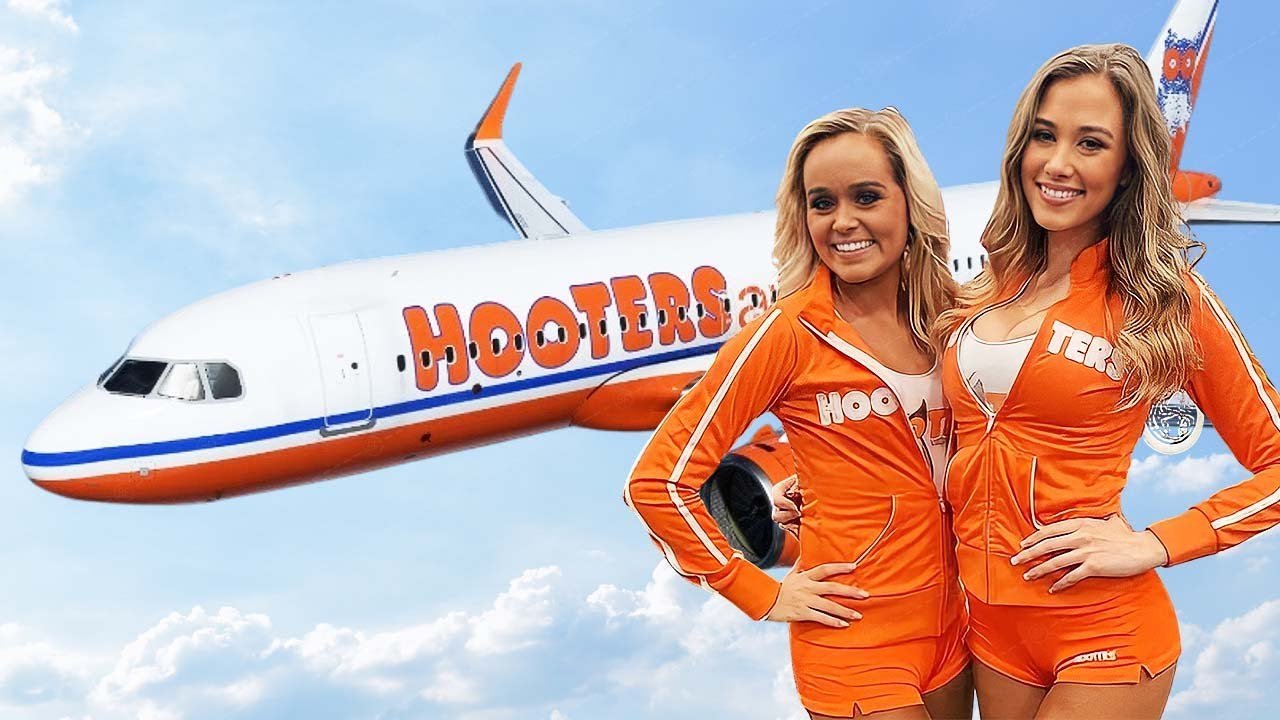In the early 2000s, while the aviation industry grappled with high costs and tight competition, one company decided to take to the skies in a way that turned heads—Hooters. Yes, the iconic restaurant chain, known for its wings, beer, and cheerful waitresses, launched its very own airline. If you’ve never heard of Hooters Air or thought it was a joke, you’re not alone. It was a bold experiment in branding, and though short-lived, it left a mark in aviation history.
A Sky-High Idea
The year was 2003, and Robert H. Brooks, the businessman behind the Hooters restaurant empire, had a vision. He wasn’t content with just dominating the casual dining industry. Instead, he wanted to take the Hooters experience to a whole new level—30,000 feet up, to be exact. The concept? An airline that was as much about the journey as the destination.
Brooks purchased Pace Airlines, a small North Carolina-based charter carrier, and transformed it into Hooters Air. It wasn’t just about rebranding the planes; Brooks wanted to give passengers a flying experience they’d never forget. The airline officially launched on March 6, 2003, with flights departing from Myrtle Beach, South Carolina—a nod to one of Hooters’ popular tourist spots.
What Made Hooters Air Different?
From the moment you boarded a Hooters Air flight, it was clear this wasn’t your average airline. The interiors of the planes were emblazoned with the bright orange and white Hooters branding, creating a cheerful, beachy vibe. But what really set the airline apart were the flight attendants—or, as they were called, “Hooters Girls.”
Yes, two Hooters Girls were present on every flight, dressed in the brand’s signature orange shorts and tank tops. However, it’s important to note that they weren’t performing traditional flight attendant duties like serving drinks or handling emergencies. Those tasks were left to a professional cabin crew. Instead, the Hooters Girls focused on entertaining passengers, chatting with them, and handing out branded merchandise.
The atmosphere onboard was laid-back and fun, designed to echo the casual, party-friendly environment of a Hooters restaurant. Flights even had a touch of nostalgia, harkening back to the golden era of aviation when flying was an experience in itself, not just a means of getting from point A to point B.
Affordable Flights and Unique Destinations
Surprisingly, Hooters Air wasn’t just a gimmick. It offered a legitimate, low-cost alternative for travelers. Tickets were priced competitively at around $99, which included snacks, drinks, and plenty of entertainment. The airline primarily targeted leisure travelers, operating flights to and from Myrtle Beach, a hub for golfers and vacationers. Other destinations included Las Vegas, Atlanta, and Newark, catering to both vacation hotspots and major urban centers.
The airline also had a clever strategy to attract group bookings, particularly golf enthusiasts. It wasn’t uncommon for passengers to take advantage of Hooters Air’s special deals to fly in groups for golf weekends, complete with ground transportation and accommodations.
Challenges on the Horizon
Despite its strong branding and unique concept, Hooters Air faced challenges almost from the start. The airline industry in the early 2000s was notoriously difficult to navigate. Rising fuel costs were taking a toll on carriers big and small, and competition from established low-cost airlines like Southwest made it hard for Hooters Air to carve out a significant market share.
Furthermore, while the Hooters brand had widespread recognition, it also came with baggage. Some potential passengers saw the concept as too gimmicky or didn’t want to associate their travel experience with a restaurant chain. Business travelers, in particular, steered clear of Hooters Air, making it difficult to attract a broader audience.
The Final Descent
After three years of operation, the challenges became insurmountable. On April 17, 2006, Hooters Air ceased operations, citing rising fuel prices and a lack of profitability. It’s estimated that the airline cost Robert Brooks and Hooters around $40 million in losses. While the airline initially hoped to inject fun into the industry and attract a niche market, it struggled to sustain its operations in the long term.
Interestingly, the closure didn’t completely end Hooters Air’s presence in aviation. Pace Airlines, the charter carrier it was built on, continued to operate charter flights for a time, but the Hooters branding and concept were retired for good.
A Legacy That Lives On
While Hooters Air is often remembered as a quirky chapter in aviation history, it wasn’t without its merits. The airline offered something truly unique—a reminder that flying doesn’t have to be all about efficiency and cost-cutting. For a brief moment, it brought a sense of fun and novelty back to the skies, something that’s often missing in today’s airline industry.
In hindsight, the idea of combining a well-known restaurant brand with air travel wasn’t entirely far-fetched. It tapped into a loyal customer base, created a buzz in the media, and even inspired curiosity among aviation enthusiasts. The concept may not have been sustainable, but it certainly captured the imagination.
Did You Know?
So, the next time you think about aviation history, spare a thought for Hooters Air. It might not have lasted long, but it was a bold experiment that dared to think outside the box. Whether you see it as a marketing gimmick or a missed opportunity, one thing’s for sure—it’s a story worth telling.
After all, how many airlines can say they combined wings with wings?






